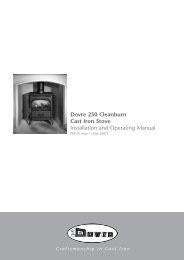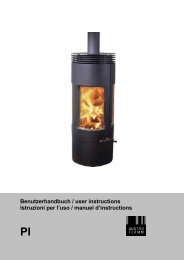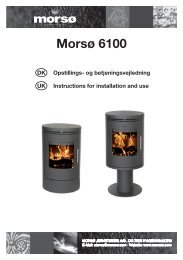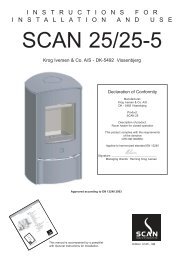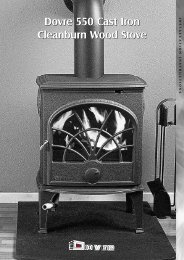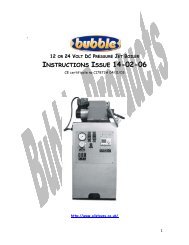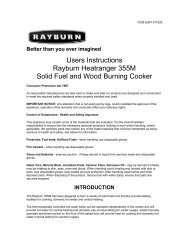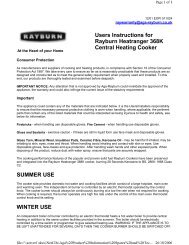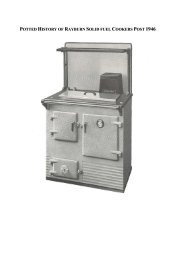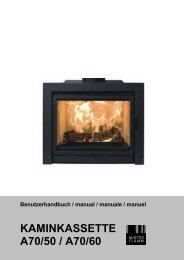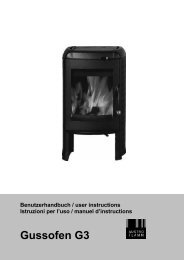Jøtul C 21 / C 22
Jøtul C 21 / C 22
Jøtul C 21 / C 22
- No tags were found...
Create successful ePaper yourself
Turn your PDF publications into a flip-book with our unique Google optimized e-Paper software.
english5.4 Initial lighting• Light the fire as described under «5.5 Daily use».• Light the fire for a couple of hours and ventilate any smokeand smell from the product.• Repeat this a couple of times.Note! Odors when using the stove for the first time.Painted products: The fireplace may emit an irritating gas whenused for the first time, and it may smell a little. The gas is not toxic,but the room should be thoroughly ventilated. Let the fire burnwith a high draught until all traces of the gas have disappearedand no smoke or smells can be detected.5.7 Using fireplace during thetransition from winter to springDuring a transitional period with sudden fluctuations intemperature, negative smoke draught or under difficult windconditions, disturbances in the chimney draught may occur sothat the smoke gasses are not drawn out.One should then use less firewood and have a larger opening inthe air vents so that the wood burns fresher and faster. In thiswas the draught in the chimney will be maintained.To avoid accumulated ash, it should be removed more often thanusual. See «6.2 Ash removal».Enamelled products: Condensation may form on the surface ofthe fireplace the first few times it is used. This must be wiped offto prevent permanent stains forming when the surface heats up.5.5 Daily useThe product is intended for intermittent combustion. Byintermittent combustion one means normal use of a fireplace,meaning that each fire should burn down to embers before newfirewood is added.• Open both draught vents (fig. 5B and C).(Use a glove, forexample, when the handle is warm.)• Place two medium sized logs in/out on each side of thebase.• Crumple some newspaper (or birch bark) between these andadd some kindling wood in a criss-cross pattern on top andlight the newspaper. Increase the size of the logs gradually.• Leave the door slightly open until the logs catch fire.Close thedoor and the ignition vent when the firewood has ignited andthe fire is burning briskly.• Then regulate the rate of combustion to the desired level ofheating by adjusting the air vent (fig. 5B).Nominal heat emission is achieved when the air vent is openapproximately 75%.5.6 Adding firewood• Each load should burn down to embers before new firewood isadded. Open the door slightly and allow the negative pressureto level out prior to opening the door completely.• Add the wood and make sure that the air vent is fully openfor a few minutes until the wood has caught fire.• Regulate the air vent (fig. 5B) once the wood has properlyignited and is burning well.N.B. Danger of overheating: the fireplace must never be used ina manner that causes overheating.Overheating occurs when there is too much wood and/or air sothat too much heat is developed. A sure sign of overheating iswhen parts of the fireplace glow red. If this happens, reduce theventilation opening immediately.Upon suspicion of excessive/poor draught in the chimney, seekprofessional help. See also «2.0 Technical data» and «4.5 Chimney»for information.12




